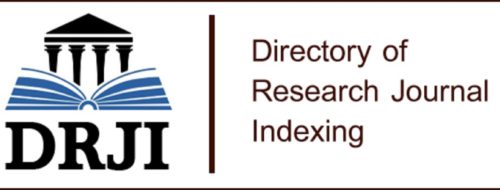Estimation of the reproductive dynamics of the Spiny Camotillo, Diplectrum Labarum Rosenblatt and Jhonson, 1974 (pisces: serranidae) landed in the port of Jaramijó, Manabí, Ecuador.
Investigation article
Keywords:
Size at maturity, condition index, gonasomatic index, reproductive season, growth, allometryAbstract
The sand perches, genus Diplectrum, are target fishes in several fishing harbors in Manabí Province, particularly in Jaramijó and San Mateo. However, there is not yet a specific regulation for their management. In this study, the main biological, reproductive and fishing aspects of the highfin sand perch Diplectrum labarum were analyzed in the port of Jaramijó, Manabí, Ecuador, in order to recommend technical measures for its conservation. Between January and June 2018, biometric and biological information of this species were obtained from the artisanal fleet. A total of 179 specimens were evaluated, which showed an average size of 19.3 ± 1.7 cm Lt (15 to 25 cm Lt) while the average total weight was 95.7 ± 26 g (44.2 to 218.4 g). The most frequent sizes were 17 to 21 with a mode at 18.5 cm Lt. The eviscerated weight decreased between 8.7 and 8.3% on average with respect to the total weight. All individuals evaluated were hermaphrodites, presenting ovotestis. Four stages of gonadal development were identified and observed along the entire study period, which reveals that the reproductive activity took place along the study period. There were two periods of greater reproductive intensity, March and May, and a minimum in January. The total length vs. total weight relationship was Pt = 0.0351 Lt2.67, with the exponent significantly lower than 3, suggesting a negative allometric growth for the species. The size of first maturity was estimated at 20.8 ± 0,6 cm LT and the smallest mature individual was 17,0 cm LT. The ban currently being implemented by the Secretary of Fishery Resources during February and March of each year is suitable for the conservation of D. labarum since it coincides with one of the periods of greater reproductive activity of the species.
Keywords: Size at maturity, condition index, gonasomatic index, reproductive season, growth, allometry.
Downloads
References
Acevedo, J., W. Angulo, M. Ramírez & L.A. Zapata. 2007. Reproducción del pez Brotula clarkae (Pisces: Ophidiidae) en el Pacífico colombiano. Rev. Biol. Trop., 55(3-4): 957-967.
Acevedo-Cervantes, A., J. López-Martinez & E. Ruiz-Villa. 2007. Biomasa y biología reproductiva de especies clave en la fauna de acompañamiento del camarón, en las costas de Sonora, durante un periodo de veda. Cap. 1.4.1 En: López-Martínez, J. y Morales-Bojórquez, E. (Ed.) Efectos de la pesca de arrastre en el Golfo de California. Centro de Investigaciones Biológicas del Noroeste, S.C. y Fundación Produce Sonora, México, p. 466.
Bernabé, A.P. & González S.G. 2010. Composición y superposición de dietas en cuatro especies de Diplectrum (Perciformes: Serranidae) en el Pacífico central mexicano. 58(4): 1189-1198.
Bortone, S.A. 1971. Studies on the biology of the sand perch, Diplectrum formosum (Perciformes: Serranidae). Florida Department of Natural Resources, Marine Research Laboratory.
Bortone, S.A.1973. A systematic revision of the genus Diplectrum Holbrook, 1855 (Pisces: Serranidae: Serraninae). Ph.D. Dissertation. University of North Carolina, Chael Hill, EE.UU..
Bortone, S.A. 1974. Diplectrum rostrum, a hermaphroditic new species (Pisces: Serranidae) from the eastern Pacific coast. Copeia 1974(1): 61-65.
Bortone, S.A..1977a. Revision of the sea basses of genus Diplectrum (pisces: serranidae). NOAA Technical Report NMFS Circular 404.
Brown-Peterson, D., Saborido-Rey, W., Macewicz, B. y Lowerre-Barbieri, S. 2011. Standardized Terminology for Describing Reproductive Development in Fishes, Marine and Coastal Fisheries: Dynamics, Management, and Ecosystem Science, 3:1, 52-70, DOI: 10.1080/19425120.2011.555724.
Chirichigno N,Cornejo m.2001. catálogo comentado de los peces marinos del perú. publicación especial inst. mar perú. callao –perú. p: 73.
Da Costa, M.R. and F. Gerson A. 2003. Lengthweight relationship and condition factor of Micropogonias furnieri (Desmarest) (Perciformes, Sciaenidae) in the Sepetiba Bay, Rio de Janeiro State, Brazil. Revista Brazileira de Zoología 20(4): 685-690
Entsua-Mensah, M.A. Osci-Abunyewa R, Palomares M 1995. Length-weight relationship of fishes from tributaries of the Volta river, Ghana. Part I. Analysis of pooled data sets. Naga. ICLARM January, 36-38.
Gaertner, D. and Laloe, F. 1986. Etude biometrique de la talle a’premier maturité sexualle de Geryon maritae, Maning et Holthuis, 1981 de Senegal. Oceanol. Acta, 9(4) :479487.
Guerrero–Estévez S, Moreno–Mendoza M. 2010. Sexual determination and differentiation in teleost fish. Rev. Fish. Biol. Fish. 20: 101–121.
Gulland, J.A. 1983 Fish stock assessment: a manual of basic methods Vol. 1. Wiley Interscience, FAO/Wiley series on food and agriculture. Chischester. 223 pp.
Heemstra, P.C., 1995. Serranidae. Meros, serranos, guasetas, enjambres, baquetas, indios, loros, gallinas, cabrillas, garropas. p. 1565-1613. En: W. Fischer, F. Krupp, W. Schneider, C. Sommer, K.E. Carpenter and V. Niem (eds.) Guia FAO para Identification de Especies para lo Fines de la Pesca. Pacifico Centro-Oriental. 3 Vols. FAO, Rome.
Htun‐Han, M. 1978. The reproductive biology of the dab Limanda limanda (L.) in the North Sea: seasonal changes in the ovary. Journal of Fish Biology, 13(3), 351-359.
Le Cren, E.D. 1951: The length-weight relationship and seasonal cycle in gonad weight and condition in the perch (Perca fluviatilis). Journal of Animal Ecology, London, 20(2): 201-219.
López-Martínez, J., Hernández-Vázquez, S., Rábago- Quiroz, C. H., Herrera-Valdivia, E., Morales-Azpeitia, R. 2007. Efectos ecológicos de la pesca de arrastre de camarón en el Golfo de California. Estado del arte del desarrollo Tecnológico de las Artes de Pesca, In: CEDRSSA (ed.), La situación del sector pesquero en México. CEDRSSA y Cámara de diputados LX Legislatura, México, D.F. pp. 14-47.
López P, Rosas J, Velásquez A, Cabrera T. & Maneiro C. 2002. Desarrollo embrionario y larval del bolo, Diplectrum radiale Quoy y Gaimard, 1824 (Pisces: Serranidae). Revista de Biología Marina y Oceanografía. 37(2): 127 –137.
Miller, P. J., 1984. The tocology of gobioid fishes. In. G. W. Potts y R. J. Wootton (Eds.). Fish reproduction. Strategies and tactics. Academic Press. San Diego, CA. pp. 119-l 54.
Muñoz, A. & Revelo, W. 2014. Caracterización del arte de pesca con líneas y anzuelo para la pesca de altura en la Reserva Marina de Galápagos. Recuperado de (8 agosto 2018): http://institutopesca.gob.ec/wp-content/uploads/2017/07/Informe-Caracterizaci%C3%B3n-EOM_Galapagos-2014.pdf
Nieto-Navarro, J.T., M. Zetina-Rejón and F. Arreguín-Sánchez, 2010. Length-weight relationship of demersal fish from the eastern coast of the mouth of the gulf of California. J. Fish. Aquat. Sci. 5(6):494-502.
Nybakken, J. W., & Bertness, M. D. 2004. Marine biology: An ecological approach, 592 pp.
Obando, E. & J. León. 1989. Reproducción del bolo, Diplectrum formosum (Linnaeus, 1766) (Pisces: Serranidae) en Punta Mosquito, Isla de Margarita, Venezuela. Sci. Mar., 53: 771-777.
Pilligua Zambrano, D.A. 2018. Dinámica reproductiva de Diplectrum conceptione (Valenciennes, 1828) desembarcado en Playita Mía, Manta – Ecuador, período mayo 2018-abril 2018. Tesis de pregrado, Fac. Ciencias del Mar, ULEAM, Manta.
R Development Core Team. 2013. R: A language and environment for statistical computing. R Foundation for Statistical Computing, Vienna, Austria. Recuperado de (2 junio 2018): http://www.R-project.org
Safran, P. 1992. Theoretical analysis of the weight-lenght relationship in fish juveniles. Mar. Biol. 112, 545-551.
Somerton D. 1980. A computer technique for estimating the size of sexual maturity in crabs. Can. J. Fish. Aquatic. Sci., 37:1488-1494.
Sokal R. and F. Rohlf. 1996. Biometry. Third Edition. W. H. Freeman and Co. New York. 887 pp.
Sparre P, Venema, SC. 1995 Introducción a la evaluación de recursos pesqueros tropicales, Parte 1 manual. FAO Documento técnico de pesca No. 306. Santiago de Chile. 420 pp.
Rodríguez, G.M. 1992 Técnicas de Evaluación Cuantitativa de la Madurez Gonádica en Peces. AGT S.A. Distrito Federal. 79 pp. Ruiz DMF (1993) Recursos Pesqueros de las Costas de México, su Conservación y Manejo Socioeconómico. Limusa. Distrito Federal. 208 pp.
Vera, M. 2008. Estudio biológico pesquero de los principales recursos costeros frente al litoral de la Región Tumbes durante el 2007. Inf. Interno Inst. Mar Perú. 27 pp.
Published
How to Cite
Issue
Section
License
Copyright (c) 2019 Revista de Ciencias del Mar y Acuicultura YAKU. ISSN: 2600-5824.

This work is licensed under a Creative Commons Attribution-NonCommercial-ShareAlike 4.0 International License.


1.jpg)













